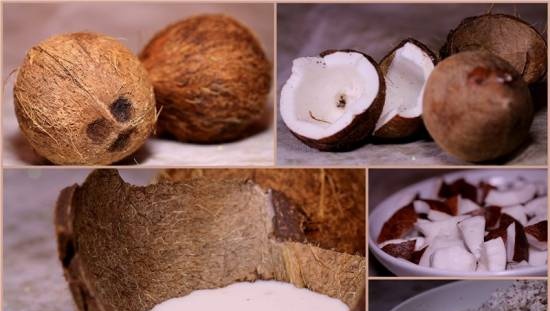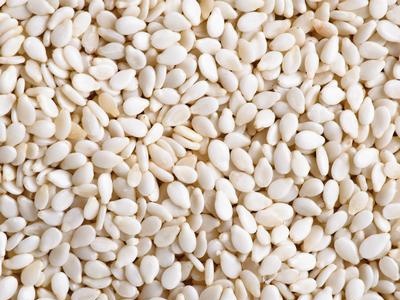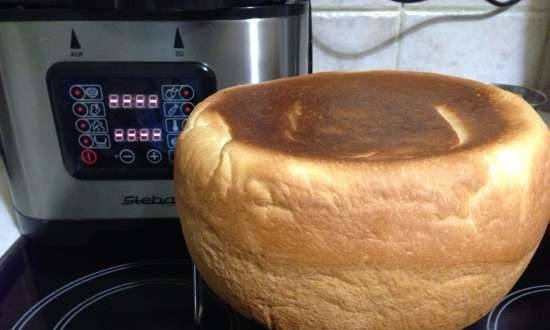|
 Russian agronomist I. Klingen sailed around South Asia. He studied how a tea bush grows. The warm sea sparkled. A refreshing breeze was blowing. Silhouettes of coconut trees stretched endlessly along the horizon, identifying the tropics. Russian agronomist I. Klingen sailed around South Asia. He studied how a tea bush grows. The warm sea sparkled. A refreshing breeze was blowing. Silhouettes of coconut trees stretched endlessly along the horizon, identifying the tropics.
But Klingen was not happy with the new places. His soul was gloomy. Today he realized that the dairy farming of old Europe and America was in the greatest danger. And it comes from that very coconut tree that waves its feathery leaves so friendly and even bent over the water towards the sea, as if stretching out its green hands to the guests.
These unhappy thoughts crossed Klingen's mind in the steamer buffet. He was served traditional buttered oatmeal for breakfast. The oil tasted especially good. It had a unique aroma, unlike the usual smell of butter. Klingen explained this by the fact that cows eat completely different food in the tropics. Oil smells differently. But just in case, he asked the waiter.
 He said that the butter was not butter at all, but coconut. It is more profitable than a cow, three times cheaper. And it's cheap because getting it is not a lot of work. Coconut is a lazy tree. The fruits fall by themselves as soon as they ripen. You just need to be patient and wait for them to fall. And observe safety precautions so that the falling source of oil does not crush your head. He said that the butter was not butter at all, but coconut. It is more profitable than a cow, three times cheaper. And it's cheap because getting it is not a lot of work. Coconut is a lazy tree. The fruits fall by themselves as soon as they ripen. You just need to be patient and wait for them to fall. And observe safety precautions so that the falling source of oil does not crush your head.
Klingen's fears were not confirmed. The palm tree did not replace the cow. However, she did not lose her meaning. Coconut oil is still famous. And they make margarine from it. And besides, they also make soap with special properties. They can wash linen in salt sea water. It gives there the same lush foam as any other in soft rain. Maybe because the palm itself grows on the salty land of the coast. Experts believe that it does not move further than 400 meters from the shore precisely because the salty breath of the sea is not heard further. In India, coconut soap is in every home. In particular, they like to wash babies with them. Their skin acquires amazing softness and elasticity.
This creation is famous not only for soap. There was a saying: "Coconut has ninety-nine usefulness, and the hundredth will soon be found!" The number "99" is said to be taken for originality. In fact, there are many more useful things. Even in antiquity, there were 350 uses in the home economy.
And science is moving forward. And the household too. No wonder every person in the tropics uses from 60 to 150 nuts for family needs a year. And for food. And cosmetics. And on lighting (coconut oil does not smoke).
These days, the list of coconut bounties has lengthened. Coconut has become on the streets the same tree of shade as our poplar. In Havana, we met him at every corner. If it's hot and thirsty, then on the outskirts of the capital, Havanese do so. Take a cobblestone and knock off one of the nuts. They cut off the top with a machete knife and drink a cool drink - milk. And on the islands of Fiji, the extraction and drinking of milk is a ritual for tourists.
We were brought by boat to one of the coral islands. There the guide climbed up an inclined trunk, as if along a steep slope, to the top of a palm tree and dropped a few nuts from there. The second guide downstairs unsealed the nuts, gave each of them a cocktail tube and suggested starting the tasting. Milk has three virtues. It was cool despite the heat. Aromatic. And most importantly, it sizzled slightly from the bubbles of carbon dioxide, like a real soda. This last property has always delighted even such a connoisseur of tropical plants as Professor E. Corner from the English city of Cambridge.
When we boarded the ship to go back to the capital of Fiji, Suva, we noticed that the guide had brought an armful of fresh coconut leaves into the cabin.As soon as they got under way, he began to weave all kinds of objects out of them. He wove a tropical sun helmet for one tourist, a hiking bag for another, and a stuffed bird for the third. And to me, as a botanist, a herbarium press for drying plants. It is a pity that the customs of the city of Sydney took these souvenirs from us. Quarantine!
Another touch to the portrait of a coconut. The trunk, although curved, is quite high. Like our birch or aspen. And sometimes it is higher, like a pine or a spruce. Crown on the crown with an umbrella. Various animals and birds find refuge in it, and sometimes people. Most often, a local rat lives there. She eats nuts, which satisfy both hunger and thirst. Therefore, sometimes he does not come down to the ground at all. If you need to stretch out, then travels through the crowns, jumping from tree to tree.
On the Fiji Islands, they say that in previous years, when there were clashes between tribes, and there were no guns yet, some fugitives survived only by climbing into the crown of a coconut. It was difficult to drive the prisoner out of there. One such lived on top of a coconut for about six months. He sat quietly in the thick of leaves. He uncorked nut after nut, and the rich milk kept him strong.
If they climbed up the trunk to drive him away, he bombarded the attackers with the same nuts. Six months later, his friends released him.
Soviet botanist Professor D. Dobrochayeva on the island-atoll of Suvorov met the voluntary hermit Tom Neil. He was assigned to guard the bird sanctuary. Tom planted the entire atoll with coconut trees and provided himself with food for all future years. He has lived there for more than fifteen years and cooks new dishes from nuts.
When planting coconuts, you need to know a few secrets to better conserve your palms and get better yields. Experts have noticed that the leaves of young coconut seedlings can unfold in different directions. Some palms to the left. Others have to the right. When they calculated how many of them are in the grove, it turned out that they were about the same number. There are a little more left. It is remarkable that the left produces about one-fifth more nuts than the right. Even Professor E. Corner could not figure out what was the matter.
But the biggest mystery of the coconut is the place of its supposed homeland. Since the days of Columbus, travelers have talked about how well the coconut swims. The palm tree itself is not accidentally bending over the water. She must drop the nut into the sea so that it sailed away to distant lands. The specified program is executed, the nut is floating. Later observations confirmed the stories of the travelers. There was a sensational eruption of the Krakatoa volcano in 1883. All vegetation died. But ten years later, botanists found coconut trees there. Not otherwise, they grew out of nuts washed ashore by the ocean.
Perhaps they would have believed that the nut could float across three seas if Thor Heyerdahl had not intervened. When Tour sailed from South America to Polynesia, he took with him two hundred coconuts. Half were laid on the deck of the raft. The other half was below deck, where salty ocean water washed over them. When we arrived in Polynesia, it turned out that the nuts soaked in the water had died. The conclusion from this story is clear to everyone. A nut cannot swim on the waves for a long time. Although it is designed for swimming, it is not very long.
True, another equally famous scientist, American A. Whitaker, kept his nuts in the sea bay for 111 days. And they survived. But at Tours they died! Different nuts, different seas, different times.
Now let's imagine where the supposed homeland might be. Some are looking for her in South America. Others are in South Asia. Still others are on the islands of the Pacific Ocean. There is also an opinion that on the mainland Mu, which has long plunged into the ocean abyss. It is only doubtful whether the Mu mainland existed at all. Nobody has proven this yet.
The most seductive of all was the American version. On the continent of South America, eleven close relatives of the coconut were counted, and in Asia and the Pacific islands - none! All these relatives are savages. So they were born here, in America.And the nut-bearing coconut itself could arise here. In addition, self-seeding of the coconut palm is not found on the Pacific islands, which was attested by the best connoisseur of these places, Professor E. Merrill. And since there is no self-seeding, it means that the palm is planted here.
Proponents of the Pacific island origin of coconut put forward the following arguments: although there are no wild relatives of coconut on the islands, but the nut palm itself has 50 varieties here, which America cannot boast of.
In search of a solution to this confusing issue, the disputing parties brought in a palm thief, the birgus crab, to discuss. The crab is as big as a turtle. He picks up the fallen fruits, unseals them with his claws and scrapes them out from the inside. If there are no fallen, climbs a tree and harvests on the spot. The crab lives on the Pacific islands. He's not in America.
Proponents of the American variant were delighted when they appreciated the crab. It seemed to them that the opponents were defeated. Still would! For crab, coconut nuts are the main food. If the coconut was born in America, and then it was brought to Polynesia, then what would the crab eat until then? Indeed, it is difficult to argue with this argument. The Pacific people wanted to surrender, but then one remarkable fact came to light. If for some reason there are no coconuts, the birgus switches to the nuts of another palm tree - palmyra. And on something that has always grown on the islands of the Pacific Ocean. So the crab could easily do without the coconut. And he got along until they brought him to Polynesia. And when they arrived, he, of course, switched to larger and more delicious nuts. And the illusion was created that he was always associated with the coconut.
And so disputes go on with varying degrees of success. Soviet botanists are inclined in favor of the Asian, island hypothesis. The very nature of the palm tree is more island than mainland. No wonder this tree bends gracefully over the water, dropping ripe fruits into the blue sea.
And now it is worth answering a question that will surely arise. How did it happen that people still have to climb (with some risk) to a height of thirty meters for the fruit of a coconut, while people have long since shortened other fruit trees in the world? The answer may be as follows. And they are trying to shorten the coconut. Already undersized, semi-dwarf varieties are being created. However, there is not always such a need. After all, a coconut is a "lazy tree", and its fruits, when ripe, must fall by themselves, as happens with plums and some other fruits.
A. Smirnov. Tops and roots
|
 Russian agronomist I. Klingen sailed around South Asia. He studied how a tea bush grows. The warm sea sparkled. A refreshing breeze was blowing. Silhouettes of coconut trees stretched endlessly along the horizon, identifying the tropics.
Russian agronomist I. Klingen sailed around South Asia. He studied how a tea bush grows. The warm sea sparkled. A refreshing breeze was blowing. Silhouettes of coconut trees stretched endlessly along the horizon, identifying the tropics. He said that the butter was not butter at all, but coconut. It is more profitable than a cow, three times cheaper. And it's cheap because getting it is not a lot of work. Coconut is a lazy tree. The fruits fall by themselves as soon as they ripen. You just need to be patient and wait for them to fall. And observe safety precautions so that the falling source of oil does not crush your head.
He said that the butter was not butter at all, but coconut. It is more profitable than a cow, three times cheaper. And it's cheap because getting it is not a lot of work. Coconut is a lazy tree. The fruits fall by themselves as soon as they ripen. You just need to be patient and wait for them to fall. And observe safety precautions so that the falling source of oil does not crush your head.




























































































































